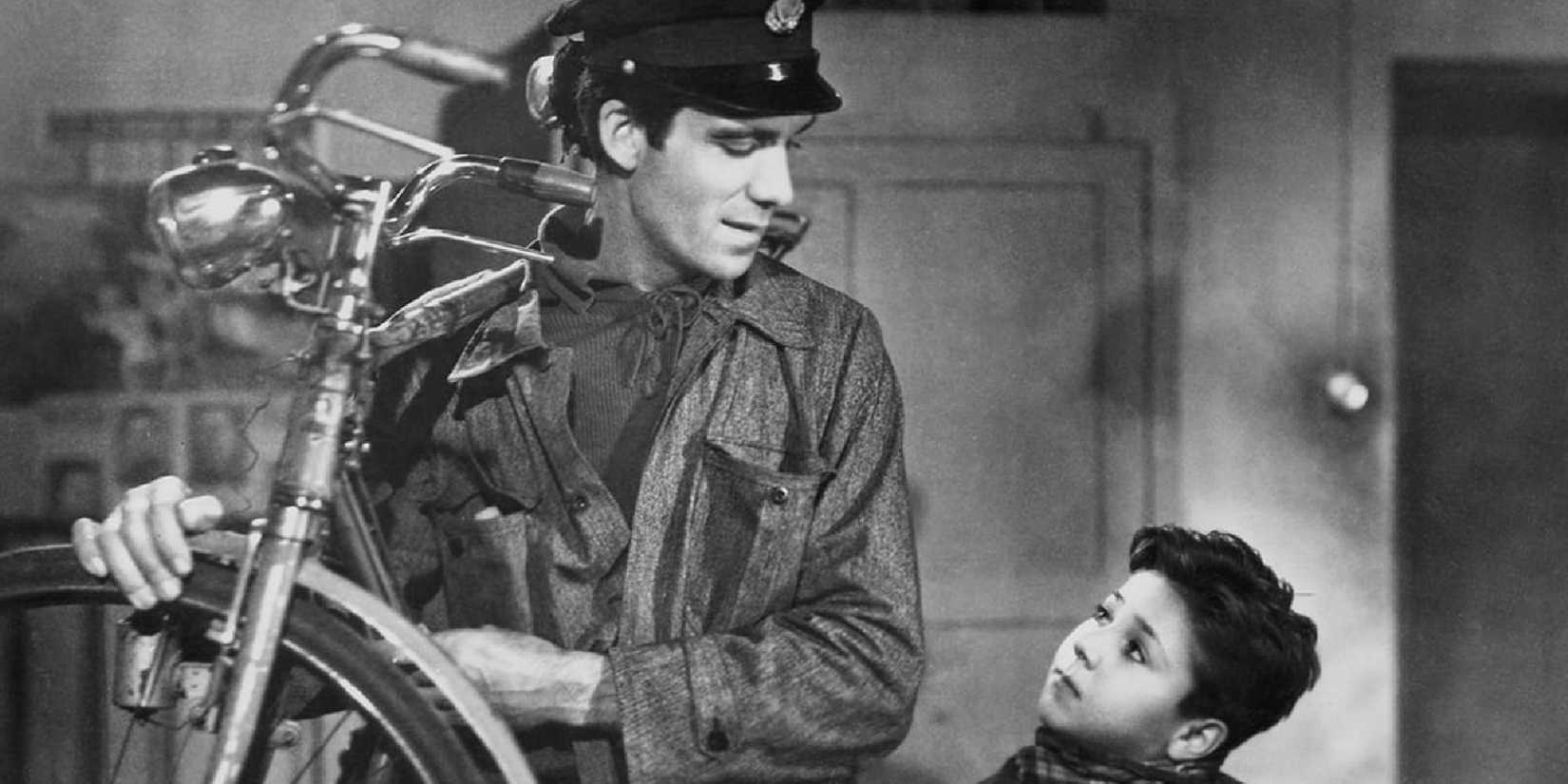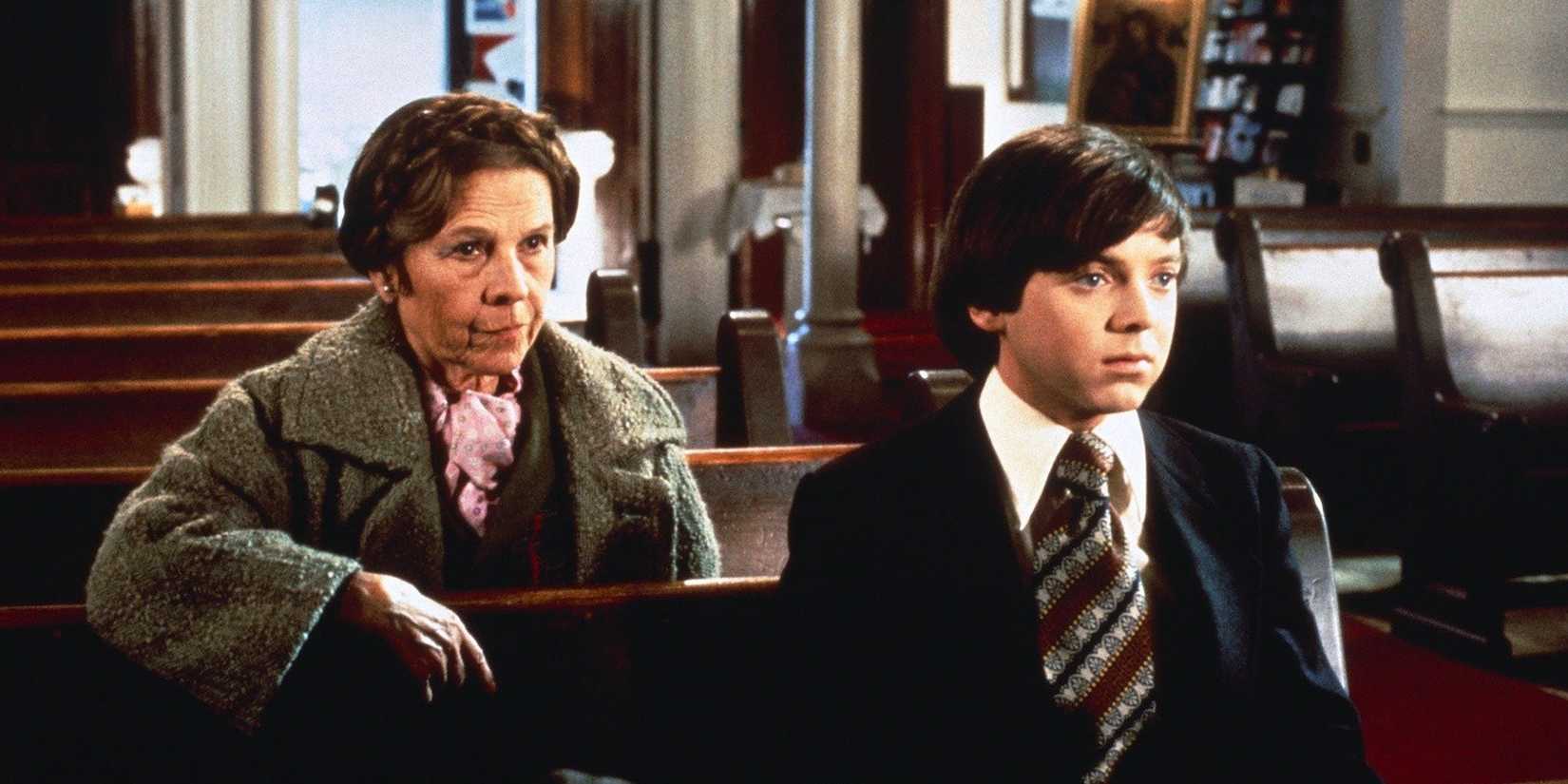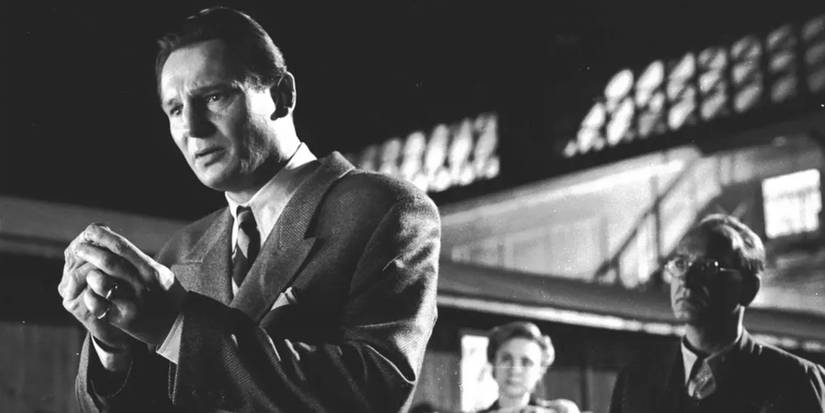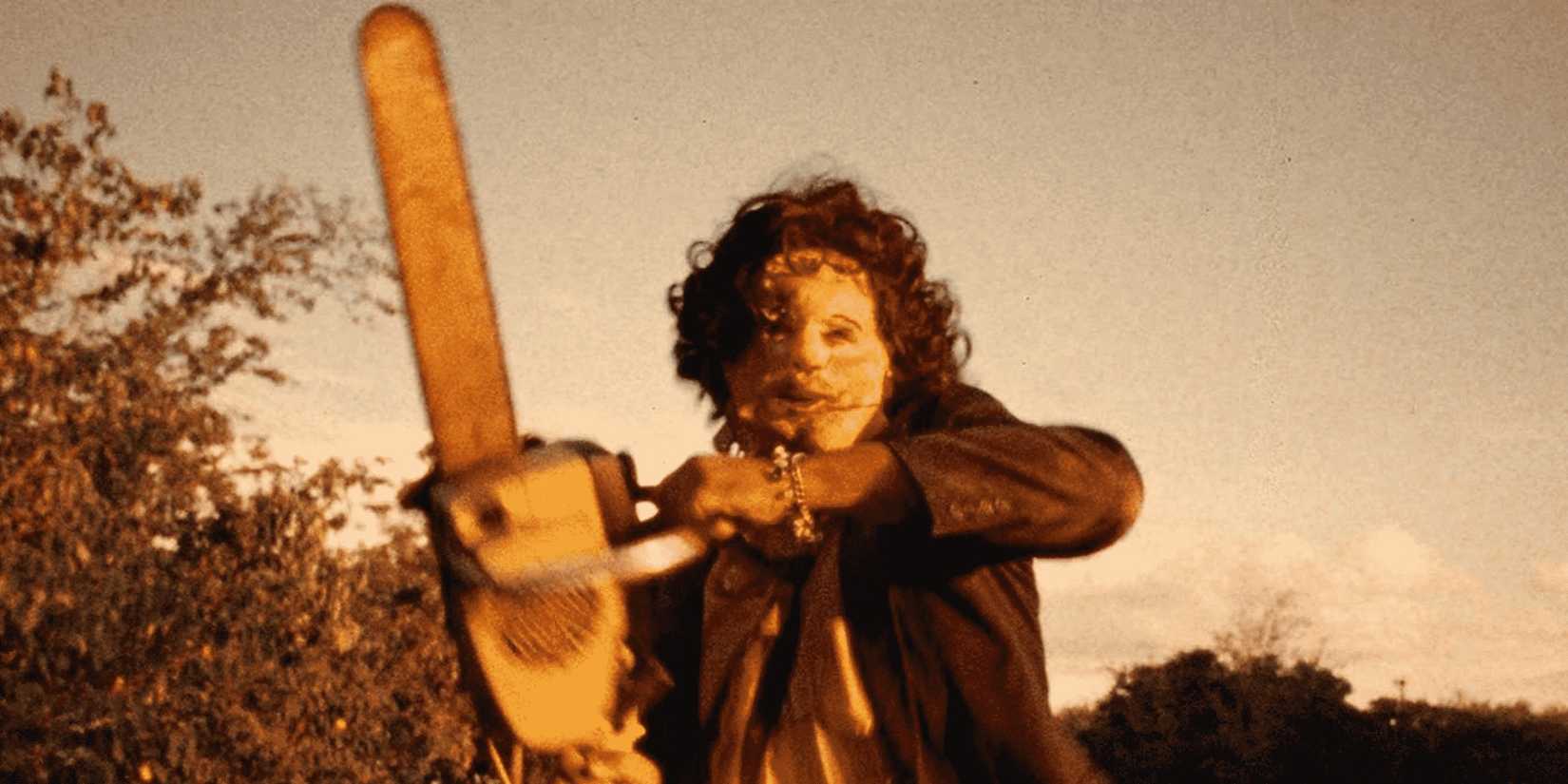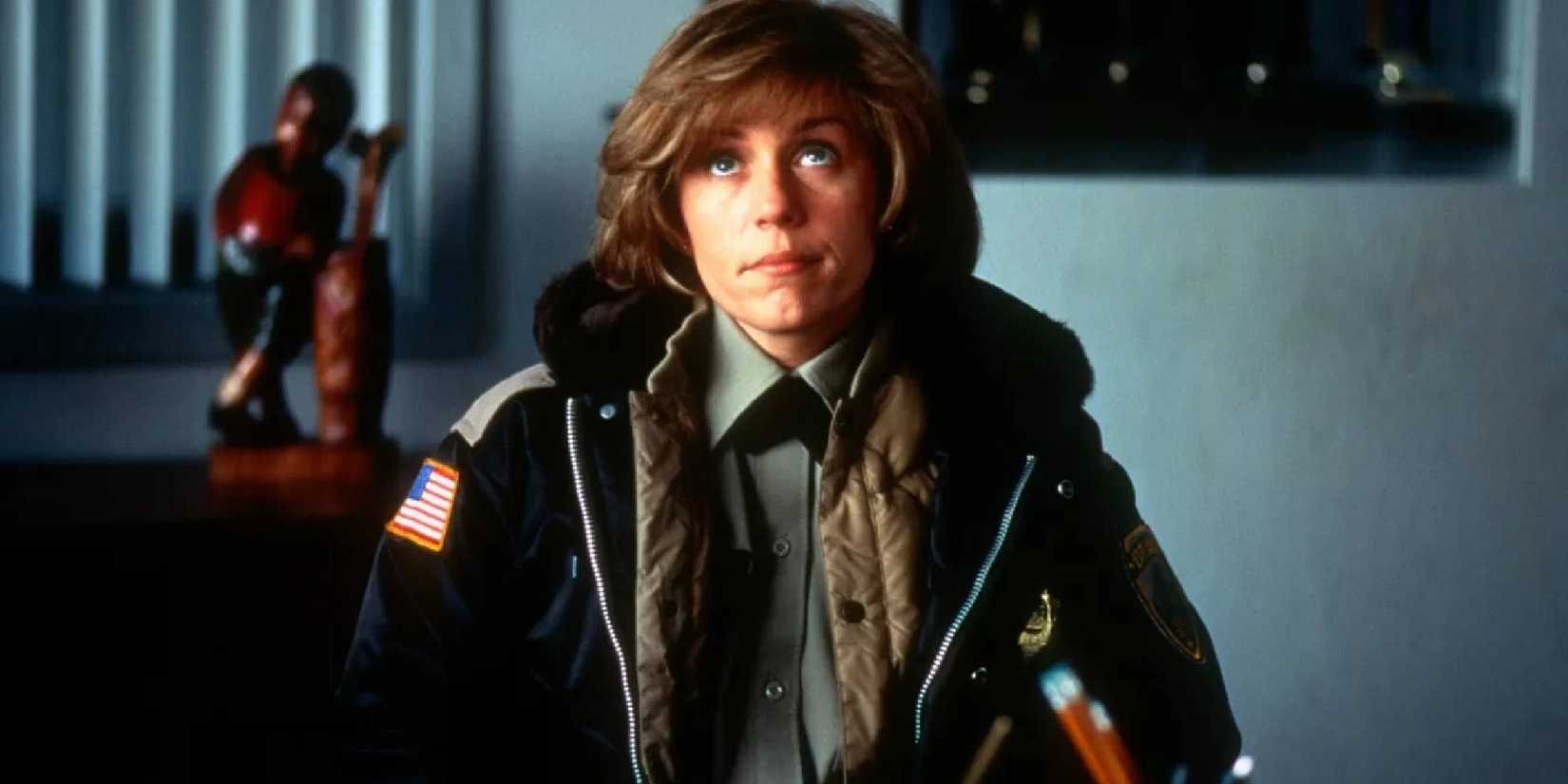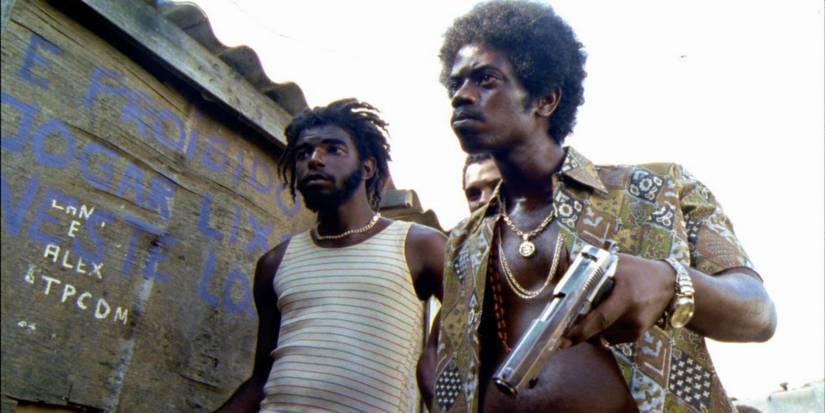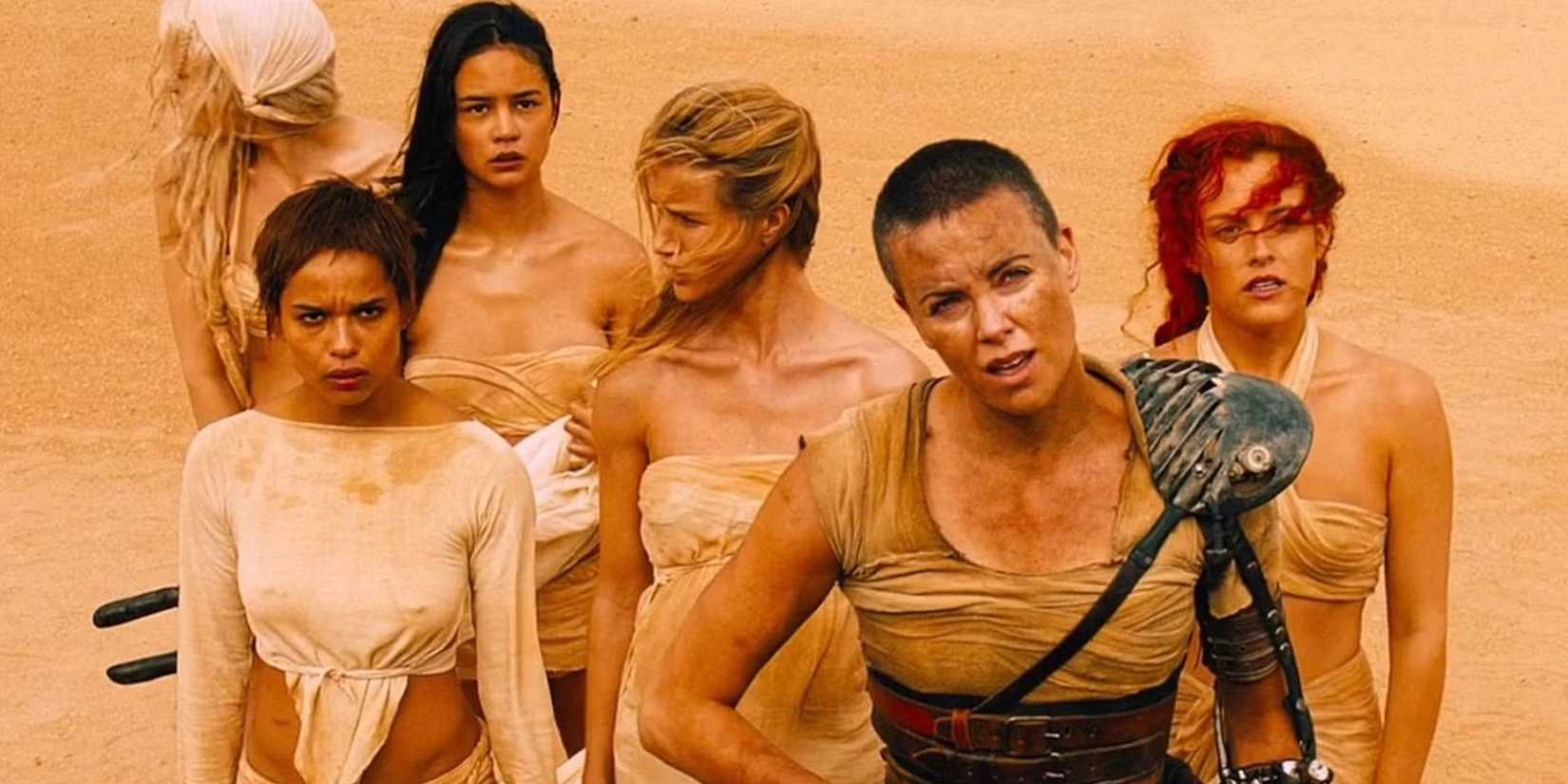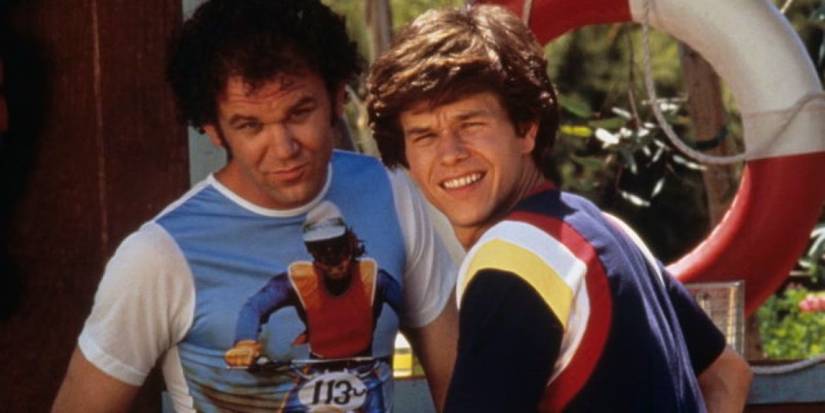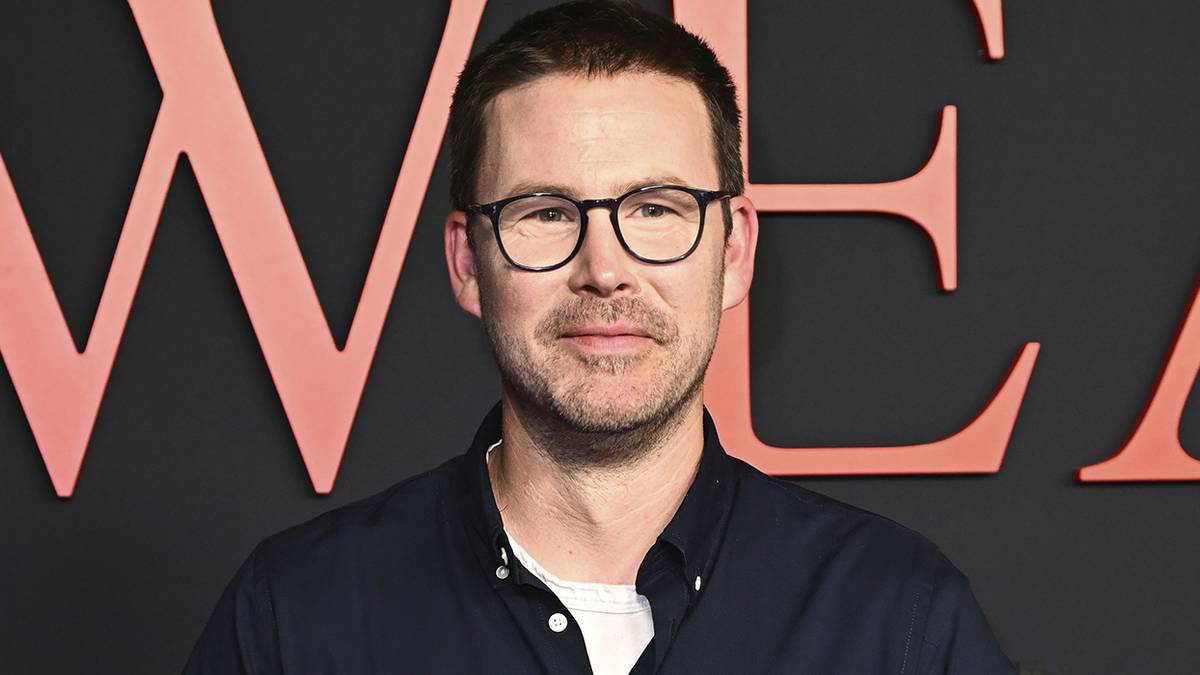
10 Great Movies Recommended by Zach Cregger
Zach Cregger may be known to wider audiences as the newcomer director of Barbarian and Weapons, but true fans know he’s been in the industry for a while now. It’s typical for a career to take off after years of hard work—lasting success very rarely comes immediately—and it seems Cregger’s love of cinema kept him inspired and driven to one day make movies he’d be proud of.
Nowadays, we turn to Cregger for recommendations too. Many fans of horror, comedy, and a blend of both, appreciate Cregger’s contributions to film, and aspiring filmmakers he inspires often ask him for advice. It’s not rare to hear him being asked about his favorite movies, either, so here are the ten movies recommended by Zach Cregger, that he’s listed among his all-time favorites.
10
‘Bicycle Thieves’ (1948)
Vittorio De Sica‘s drama Bicycle Thieves is the cornerstone of Italian neo-realist cinema, shot on the streets without studio sets, with untrained actors. The star of the film, Lamberto Maggiorani, was a factory worker whom De Sica hired to portray the protagonist; the boy who plays his son in the film was put in after De Sica noticed him watching the production from the streets. Bicycle Thieves is often considered among the best movies of all time, and it influenced generations of filmmakers.
Bicycle Thieves is set in post-WWII Rome, where a poor father, Antonio, finally lands a job, but one that requires a bicycle. When the bicycle is stolen from him on his first day of work, Antonio and his son Bruno embark on a citywide search for the stolen bicycle. Desperate to get his only means of making money, Antonio wrestles with his dignity, pride, and the need to nurture and feed his family.
9
‘Harold and Maude’ (1971)
Harold and Maude is a dark romantic comedy that was at first a box-office failure, but managed to reach cult status over time. The movie wasn’t all that popular because contemporary audiences and critics didn’t appreciate its dark humor; a retrospective appraisal decided Harold and Maude was a relevant piece of cinema, calling it one of the funniest and best movies of all time. It makes sense why Cregger would like this one—he was a comedy writer before starting his directorial career in horror, like most good horror filmmakers nowadays.
Harold and Maude follows an eccentric, morbid young man, Harold Chasen (Bud Cort), whose wealthy, socialite mother wants him to be less himself and follow the lifestyles and preferences she imposes on him. During one of his hobby outings, Harold meets 79-year-old Maude (Ruth Gordon), who awakens a spark for life within him. He falls in love with her, and she teaches him to embrace the ups and downs of life. From the quirky premise to Cat Stevens‘ iconic soundtrack, Harold and Maude has a lot of greatness. It’s the defining example of countercultural cinema of the 1970s.
8
‘Schindler’s List’ (1993)
Steven Spielberg‘s Schindler’s List is one of those must-watch movies that you’ll probably only see once because of how devastating and dark it is. The black and white cinematography adds grit to it, making it feel somehow more historical and realistic; this drama is a true story, based on Nazi industrialist Oskar Schindler’s actions during the Holocaust. Naturally, a powerful movie like this one won several Oscars and other accolades, and is often cited as one of the greatest movies of all time as well as a most compelling depiction of WWII and its casualties.
Schindler’s List follows Oskar Schindler (Liam Neeson), an industrialist and member of the Nazi Party from Czechoslovakia, who arrives in Kraków, Poland, in hopes of getting rich. He buys a factory which he wants to dedicate to producing enamelware. He hires Jewish official Itzhak Stern (Ben Kingsley) and a large portion of the local Jewish community, deeming them essential so they’re not taken to concentration camps or killed. The movie was filmed on location, in Kraków, and the documentary-like approach Spielberg took with this makes it a powerful piece of film.
7
‘The Texas Chain Saw Massacre’ (1974)
One of Cregger’s favorite horror movies includes the highlight of 1970s slasher cinema, The Texas Chain Saw Massacre. Despite being made on a shoestring budget, with director Tobe Hooper serving as producer, co-composer, and co-writer, it gained a large cult following over time and became one of the most influential horror films; it was also banned in several countries. Leatherface continues to be an eerie, terrifying horror movie killer, among the ranks of Michael Myers, Jason Vorhees, and Freddy Krueger.
The Texas Chain Saw Massacre follows a young group of friends traveling through rural Texas in a van, when they pick up a hitchhiker and toss him out of the car because of his weird behavior. One of the people in the van is Sally Hardesty (Marilyn Burns) and her brother Franklin, and the group decides to look through the Hardesty family’s abandoned home nearby. Soon, a terrifying figure wearing a mask and wielding a chainsaw starts chasing them, and the horrors only begin there. The movie was marketed as based on real events in an attempt to mirror the political climate of the time; it also pioneered the “final girl” trope that we also see in many slasher movies after it.
6
‘Barry Lyndon’ (1975)
Barry Lyndon is one of Stanley Kubrick‘s greatest efforts; it’s a historical epic drama that is still an incredible filmmaking effort because of its revolutionary and stunning cinematography. Kubrick included scenes only shot in candlelight with Zeiss lenses developed for NASA and long double shots that end with slow backward zooms. It’s a long feature, going strong at 185 minutes, but a masterpiece that was reevaluated after its initial failed reception. Roger Ebert considered Barry Lyndon a great movie from the start, and after adding it to his list of Great Movies in 2009, he called it “certainly in every frame a Kubrick film: technically awesome, emotionally distant, remorseless in its doubt of human goodness.”
Barry Lyndon was based on the novel by William Makepeace Thackeray, called The Luck of Barry Lyndon; it follows the eponymous character, an 18th-century Irishman, as he rises through social ranks by using his charm to manipulate. He makes choices fueled by ambition and vanity, and is mostly faced with the decay of both throughout the story. The primary themes include fate and circumstances, with many calling Barry Lyndon a movie in which things “simply happen to the man.”
5
‘Mulholland Drive’ (2001)
The surreal neo-noir/psychological mystery, Mulholland Drive, is often an inspiration to many filmmakers. This David Lynch feature is often deemed his most iconic work, but moreover, it’s a movie that Lynch himself ever refused to define in simple terms or themes. If we look at Cregger’s Weapons, it has parallels to Mulholland Drive in a way that it’s about everything and nothing—all the themes you can draw from the narrative firmly exist, but are simultaneously only implied. Mulholland Drive blends noir, dream logic, and emotional horror, and it’s a puzzle that rewards multiple viewings.
Mulholland Drive follows an aspiring actress arriving in Los Angeles, Betty (Naomi Watts). She finds an amnesiac woman who calls herself Rita (Laura Harring) after seeing a poster of Rita Hayworth; the two become friends, but their friendship fractures into a surreal dreamscape. The movie explores identity, illusion, and Hollywood’s dark underbelly. Mulholland Drive really is one of the most influential films of all time, and it remains relevant to this day with its themes and explorations.
4
‘Fargo’ (1996)
One of Cregger’s four favorites on Letterboxd includes Fargo, the Joel and Ethan Coen crime thriller/dark comedy. The movie that inspired the TV anthology series of the same name, and numerous other crime comedies after, Fargo has that bleak humor, dark tone, and absurd violence that we’ve grown to love in Coen Brothers’ films (and wider). The movie’s opening claims that it was based on real events in Minnesota in 1987, though the Coens’ explanations over time showed that Fargo is basically a highly fictionalized version of a case with similar basics. Locals who’ve found similarities with real crime have woven stories about Fargo, making it an immortal piece of cinema that is pretty much about every crime out there, but also just one in particular. It’s pretty clever.
Fargo follows several characters: a car salesman in Minnesota, Jerry Lundegaard (William H. Macy), who hires kidnappers to take his wife so he could claim insurance; the kidnappers, Carl and Gaear (Steve Buscemi and Peter Stormare); and Marge Gunderson (Frances McDormand), a police officer investigating the kidnapping. The events spiral into chaos when things fail going to plan for Jerry and the kidnappers. Marge is heavily pregnant, competent, and most importantly, adamant, and she insists on solving this case.
3
‘City of God’ (2002)
City of God is a Brazilian crime drama that was met with rave reviews and lasting impressions, and left an imprint on the world of crime movies (not just international). It was based on real events in the Cidade de Deus, a favela suburb of Rio de Janeiro, and draws parts from the same-name 1997 novel by Paulo Lins, who grew up in Cidade de Deus. The translation of the favela’s name is literally “city of god.” This movie is gritty, violent, realistic, and frenetic; it’s pure in its depictions of social inequality and life in the favela.
City of God follows various characters across the slums of Rio de Janeiro’s famous neighborhood Cidade de Deus. The formal protagonist is Rocket, a young boy who dreams of becoming a photographer, while witnessing his childhood friends rising to power and becoming ruthless drug lords. City of God is a sprawling epic that spans decades and shows how society, peer pressure, and basic survival instincts fuel ambition, greed, honor, and pride. It’s an Oscar-nominated masterpiece that everyone should see at least once.
2
‘Mad Max: Fury Road’ (2015)
It’s quite easy to call Mad Max: Fury Road the best action movie of all time, as it’s an incredible feat of cinema that feels like a once in a lifetime event. This dystopian action thriller blends in sci-fi beautifully, but beyond genre definitions and praise, it’s technically perfect. It’s the movie you need to watch to understand what great editing looks like; it’s also a movie that can teach you how to be creative in your cinematography, writing of action sequences, and engineering sound so it completes the experience. Any filmmaker should strive to make a movie like Fury Road.
Mad Max: Fury Road is George Miller‘s fourth foray into the world of Mad Max, and the revival of his famous trilogy. It follows Max Rockatansky (Tom Hardy) stumbling upon Immortan Joe’s (Hugh Keays-Byrne) oasis where he lives as a warlord and keeps fertile women captive. His oil rig driver, Imperator Furiosa (Charlize Theron), decides to release the captive women on her next oil rig run, and Max is taken along as a blood donor. In a wild turn of events, a relentless chase across the desert ensues, and it’s a non-stop thrill of chases, gunfights, fistfights, and road rage. A masterpiece.
1
‘Boogie Nights’ (1997)
In the interview for Letterboxd, Cregger names Boogie Nights as the first among his four favorite films, saying that it’s long, yet not long enough, perfectly executed, and a movie that has “everything.” Paul Thomas Anderson directed and wrote Boogie Nights, which was the launchpad for Mark Wahlberg‘s acting career. It also had a pretty interesting production process overall, with Anderson first fighting to make it three-hours long and rated R (he had to pick one), and then Burt Reynolds apparently hating the movie after its release, despite getting over ten nominations for various awards for his role.
Boogie Nights is set in the disco era, 1970s Los Angeles, and follows the young nightclub employee Eddie Adams (Wahlberg), who lives with his dysfunctional parents. One evening at work, he meets porn filmmaker Jack Horner (Reynolds), and becomes a porn star under the name Dirk Diggler. Eddie enjoys the lavish lifestyle, the fame and the excess, but also witnesses the decline and decay within the industry. Boogie Nights is revered for its long takes, brilliant ensemble cast, and the beautiful blend of glamour and melancholy; it’s the ultimate critique of the American dream through the lens of its often most lucrative industry.
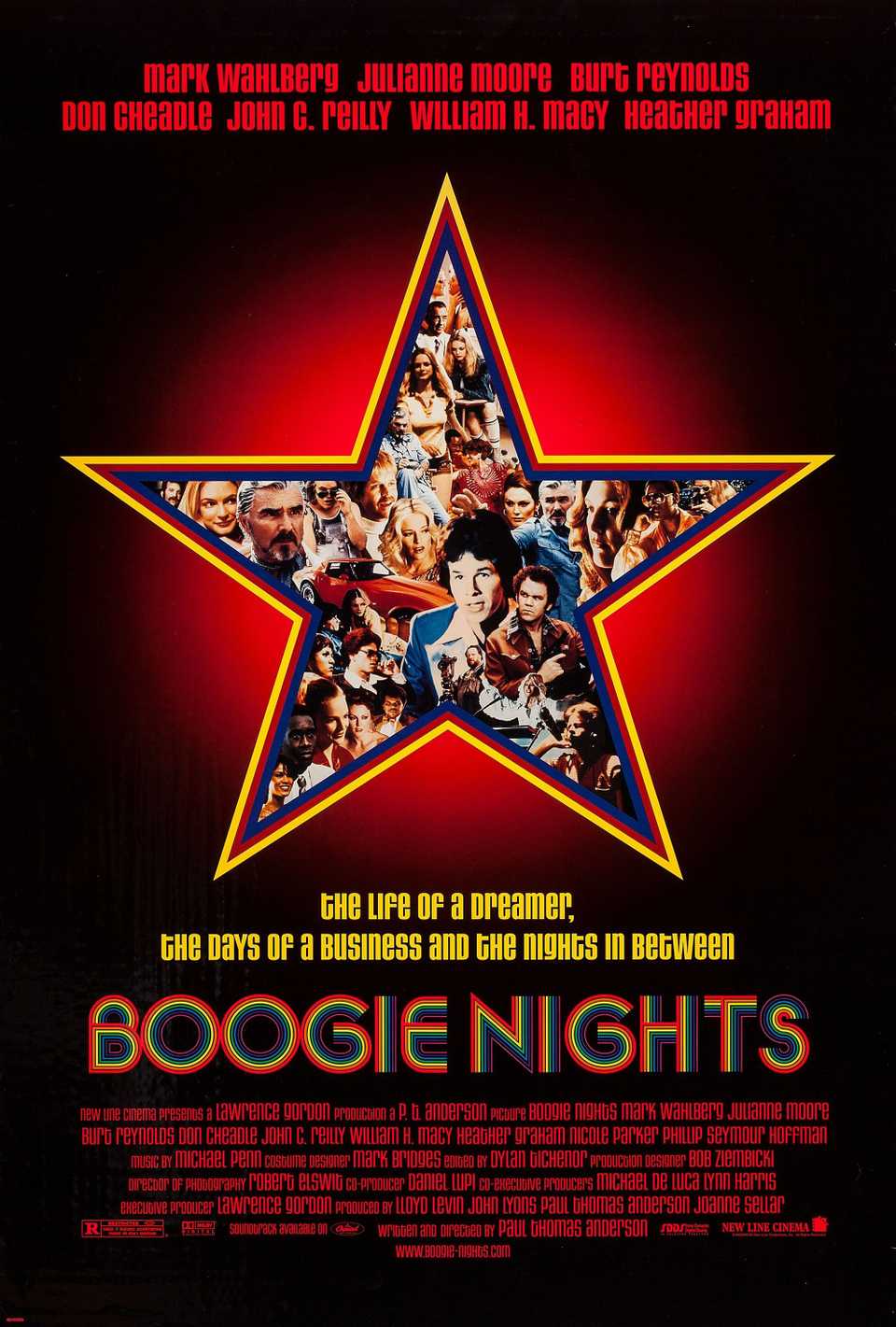
Boogie Nights
- Release Date
-
October 7, 1997
- Runtime
-
155 minutes
- Director
-
Paul Thomas Anderson
- Writers
-
Paul Thomas Anderson

